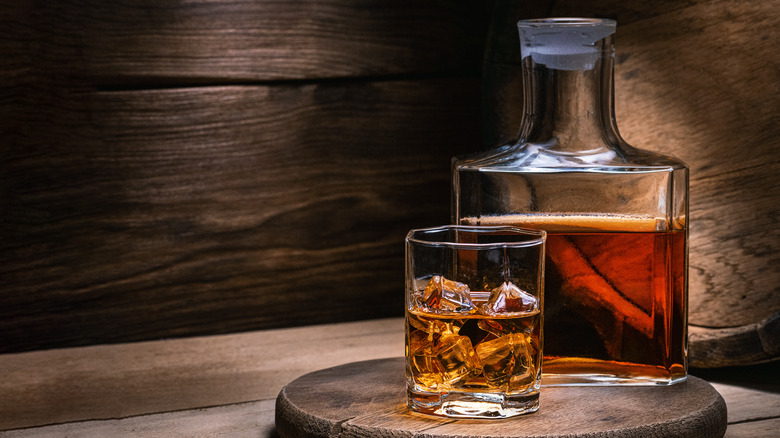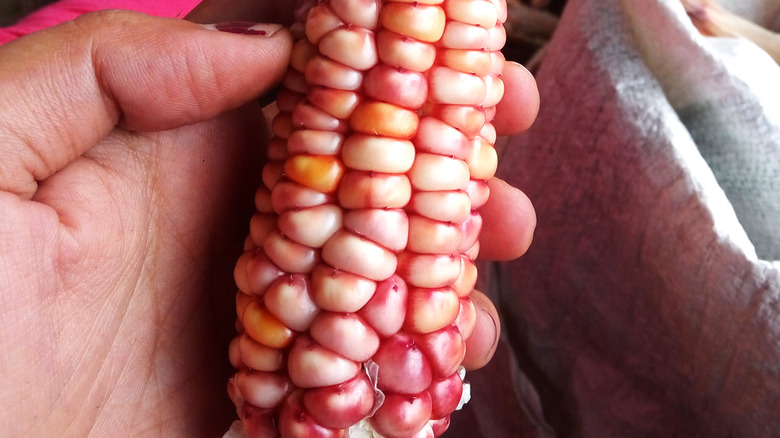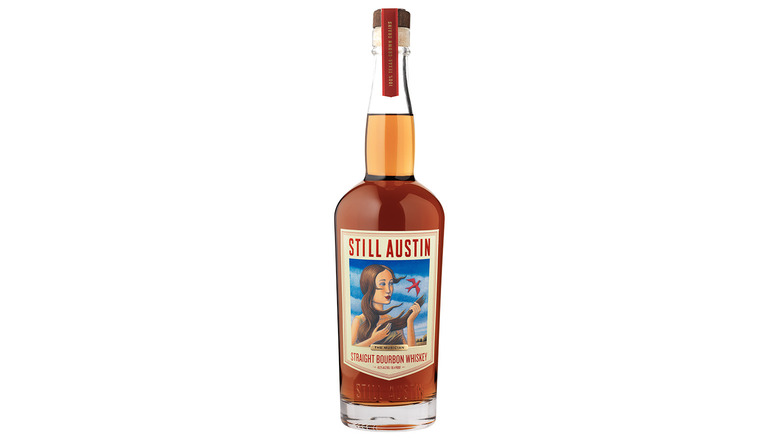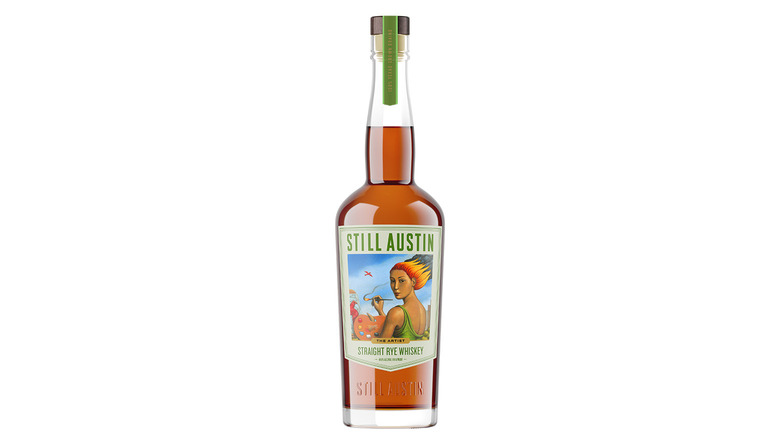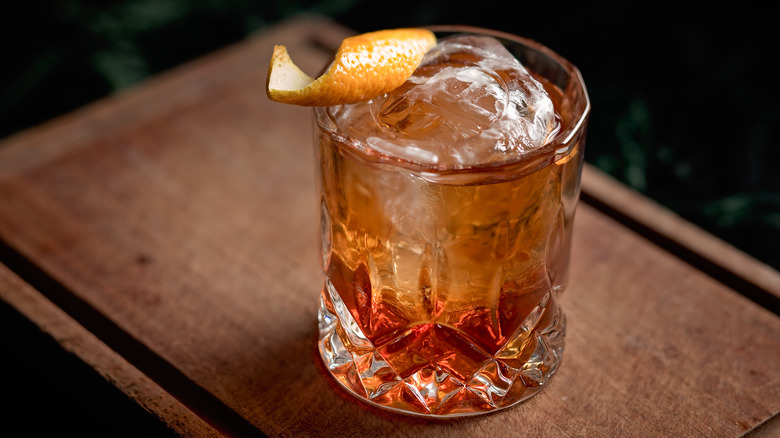Review: Still Austin Whiskey Is A 6th Street Bar Crawl In A Glass
As the bourbon scene catapults forward, Kentucky and Tennessee seem to be putting out as much as they properly can. The most movement in a region's perception and consumption just might be over in Texas. Once depicted as cyclones in a bottle, the extreme-weathered whiskeys are beginning to carve out their own space for what they do offer rather than what they don't replicate. See how highly Garrison Brothers ranked in the best American whiskey brands if you doubt the trend. To prove it, we reviewed the main whiskeys from Still Austin, the capital city's first distillery in almost a century, according to Austin's tourism website. It opened its doors in 2017 but is already releasing bucking bottles of bourbon, rye, and gin.
Texas whiskeys might have plenty of limestones available to rebuff mid-Atlantic claims to fame, but they tend to make their focus the hyperactive barrel wood. Still Austin is a perfect example of how high heat and a surprising depth of cold can squeeze a different type of bourbon out of the barrel. Like the rest of the state, it goes big, but not wild.
Austin is known for a music scene on a level comparable only to Nashville's Main Street, New York's Greenwich Village, and NOLA's, well, near anywhere. It's therefore entirely fitting that all three of these bottles smack your palate like a high-energy drumline by local legends The Impossibles. And equally fitting that we begin with the straight bourbon labeled The Musician.
How much does Still Austin whiskey cost?
Still Austin's offerings are for sale in a pretty tight range, about $40 to $60, with the gin (not examined here) as low as $30. Overall, Drizly offers these bottles cheaper at a base price, often significantly, than Still Austin's own website, despite the Drizly markup.
After taxes, fees, and tips, both of those numbers may change, but calculating this is on a case-by-case basis, and Still Austin's shop may not ship to your address. A test run for N.Y.C. denied our order before we could even see shipping and fees, and wouldn't let us calculate a test without punching in legitimate info to satisfy the e-commerce apps. However, the brand also ships through Reserve Bar, so if you're having trouble sourcing the bottle through other sites, try that out.
Assuming surcharge parity, Drizly's probably better for you unless ordering directly is your only option. But you may just want to go pick it up yourself if you can since availability and price seem yoked to how sparsely this is distributed. If you're looking for a satisfying yet affordable bourbon that's sure to be on shelves near you, may we suggest picking one of the main four bottles from our list of the best bourbons under $50?
Where is Still Austin whiskey available?
Finding out where to buy Still Austin is a bit of a game of Battleship. The company doesn't show a distribution map on its website, it's absent from Caskers, and it only shows up on Drizly (which labels it "Texas local" on an Austin-area search) if it's in your region, even though one can often find a far-flung bottle from other producers for shipping. We may have to add this one to our list of rare bourbons worth tracking down.
Your best bet is to visit the "Where to Buy" page on Still Austin's website and punch in your zip code. It won't tell you if there's a nearby bottle, or how far away it's checking, but if your location does fall within the site's indeterminate radius, you'll know where to go. If not, the company will suggest you buy a bottle for shipping, and it's probably your best bet. And, you can always check on Reserve Bar to order a bottle, too. Prices are comparable to a Drizly search for these labels in-town, so unless you know for a fact you can stroll over and save 20 bucks, direct order is your surest solution.
Don't get downhearted if you can't obtain it. You're surely near one of the 16 bourbons every collector needs to find.
Still Austin's production process
Paste Magazine reports that three whiskey-loving families went all-in on Austin-area and Texas grains, including the striking Bloody Butcher corn variety, while also collaborating with the fantastic local beer scene to turn a fermented product into the distillate. Both of these moves are sustainably minded, cutting carbon costs by limiting transit distance. It's part of a larger measure to use every aspect of production from using historically local crops to feeding cattle the spent grains, all while minimizing resource consumption. That's something everyone can back.
The whiskey is completely produced in-house, making use of the intense heat, humidity, and big shifts in temperature, since its changes are as important to the distillate's development as its intensity. Still Austin uses the slow water reduction process, detailed here by Distiller. In fact, Still Austin's master blender Nancy Fraley is one of its main evangelists and is quoted in that article about how the process prevents the whiskey from ruination. The six-month stage likely explains why we found each bottle so manageable despite its respective potency.
Still Austin, by the way, uses a 42-foot column still named Nancy that we'll assume is in honor of Fraley until we hear otherwise.
Review: The Musician Still Austin Straight Bourbon Whiskey
The aroma starts with maple, turns into brown sugar, then sticks the landing as caramel, but don't get used to it. That's as sweet as this cattle puncher's rocket fuel gets. Ethyl and astringency do swim around the sweetness, but unusually absent of any real burn. It's a nice switch-up from every strong bourbon whose nose feels like a warning shot.
Crossing the lips, it offers robust, full-bodied lemon, tea, and honey flavors. The Musician may be the whiskey to reach for when you want a hot toddy but don't have fixings.
To its credit, The Musician's strength is not prohibitive of enjoying its quality. For all its power, it reminds you that's still under 100 proof by pulling back enough to let you savor the notes. It's not the most complex bourbon ever distilled but instead presents a really reliable, balanced mastery of whiskey's basic elements.
That said, is a whiskey that benefits from a few drops of water. It's one of those where a lot more nuance comes to the fore after you quell the volume. And good news for anyone who's ever endured an Austin summer: This bourbon is even better on the rocks. Some floral and herbal characteristics come out in the ice. It will also diminish the back-end burn, as the finish is the only place you're playing with fire. Pregame with one of these while you wait for your friends to show up.
Review: Still Austin Cask Strength Bourbon Whiskey
Topline take: This is the better of the two bourbons — if you can handle it. A lot of people may prefer the original, which is less extreme, as this intense bourbon goes a long way, and even a few sips are a heady experience.
Peppery and peanut-forward, the Cask Strength hits like candied bacon at the tip of your tongue; fat and salt all the way down. But as with the regular edition, there are two experiences in every approach, born of a rich, ruby scent on the nose. As before, you don't get any burn till the swallow, at which point the bill comes due. For differentiation from The Musician, it hits earlier than the finish here, and in both, it's a good thing. It's a rough ride even if it's smooth for what it is.
Timing aside, the saltiness really separates Cask Strength Still Austin from The Musician. Close your eyes and serve this to a friend, and they'll insist it's the bottom sips of a dirty martini. For that reason, it's another rocks recommendation, as warm martinis just never feel right compared to chilled ones. And, oddly, it's what makes this bourbon a poor candidate for the closely related Manhattan cocktail. There's too much olive umami implicit in Cask Strength to sweeten up. Garnish it with a pickled onion or peanuts, and ignore anybody who shoots you a dirty look for garnishing your whiskey.
Review: The Artist Still Austin Straight Rye Whiskey
The distillery markets The Artist's complex nose as suggesting honey, cherries, fig, clove, and coffee. We find it a much more unified experience but, then again, Fraley is famous for her ability to distinguish individual tones. Whether you find it synchronized or straightforward, The Artist definitely boasts the best nose of the three. If you detect a dozen elusive scents from ambergris to E flat, cheers to you, friend.
There's an incredibly long wait for the legs to form on this liquor, while you admire that it's the color of a good hunting dog. When they do, they're sticky, thick, and far between. As with Cask Strength, The Artist is a whiskey for those who appreciate oily liquor and all the richness that entails.
In fact, with its smooth intensity and thickness, The Artist is notable for being more like Cask Strength than it is like standard ryes. We'd even go so far as to call it less peppery than its sibling, which is odd, to begin with, and odder still when you see that its mash bill is entirely rye.
However, it's still a rye, with a long burn after swallowing, but this is entirely ameliorated once again by adding ice. That leaves you with traces of pecan, peach, and cut grass up front followed by chocolate and port wine on the swallow. (Yes, this contradicts what we said about tasting notes above, but it is what it is.)
Is Still Austin worth hunting down?
The first question is whether you can even find Still Austin in your area since the hyperlocal brand is absent from Caskers and many Drizly locations. If you can answer yes (don't forget to try finding it through Reserve Bar), at $40 to $50, the question is still considered yes. There are a few bourbons that can go toe-to-toe for satisfaction at a cheaper price, but few at this intensity and ABV. In regards to how long it will take you to get through a bottle of Still Austin, especially after cutting it with ice, this may turn out to be the longer burn on your buck.
And anyway, so few bourbons and ryes really prove themselves best on the rocks, you'll want to keep this handy for a long summer golden hour watching the sunset. It's not a brand to mix into juleps and lemonade. These are satisfying hot-weather whiskeys interesting enough to drink solo, or at most, a minimal mixture — meaning we may also have to add The Artist to the best whiskeys to make an Old-Fashioned. (There's that garnish again.) If you've got a suitcase, consider this your long-running souvenir from a wild week in Austin.

